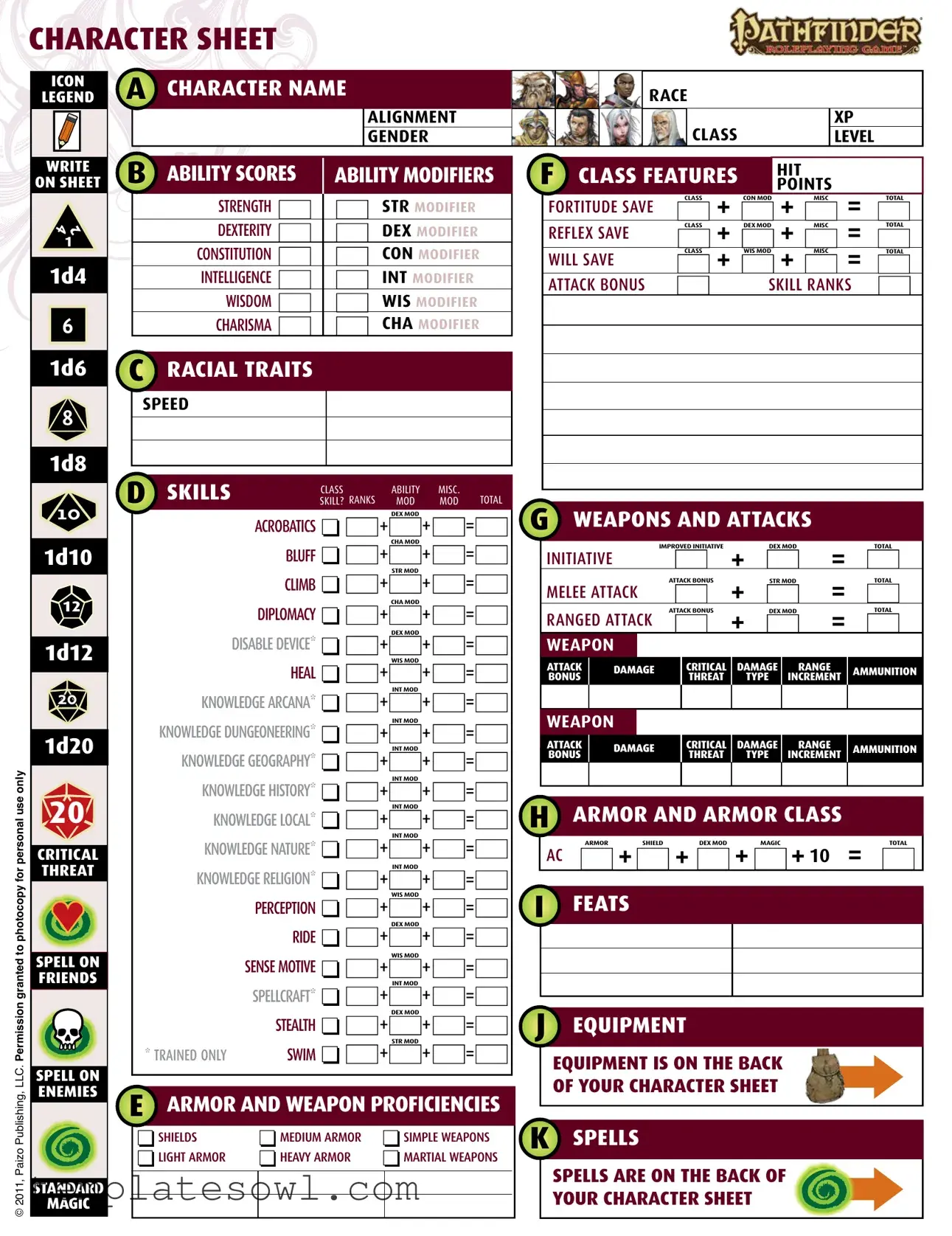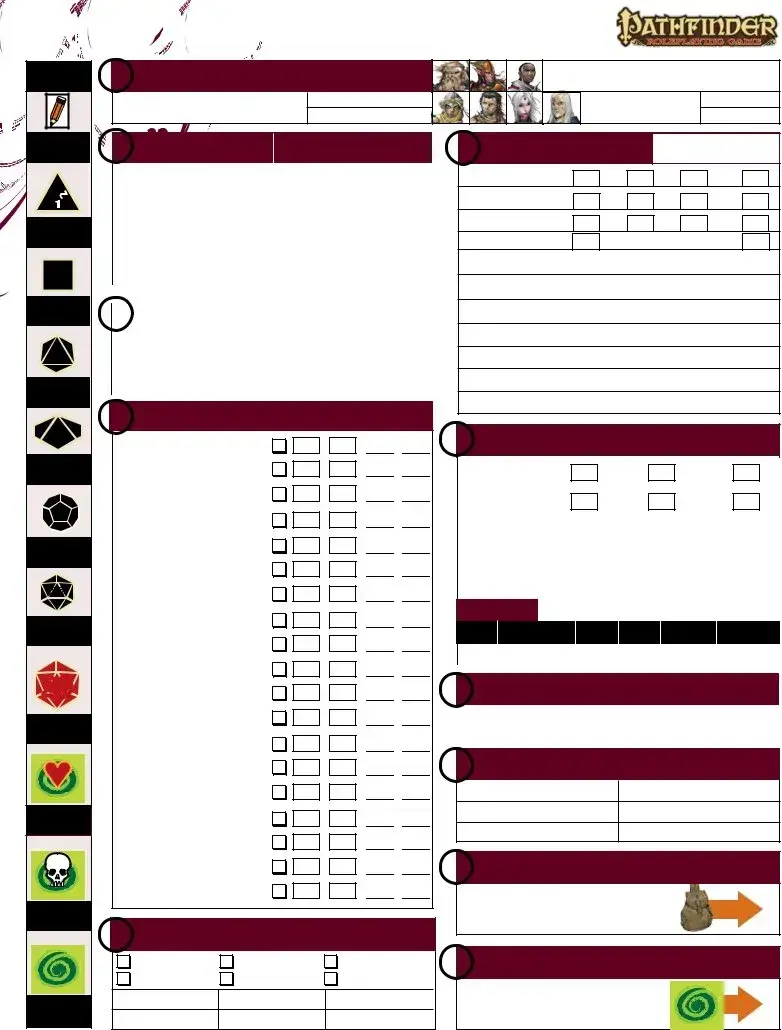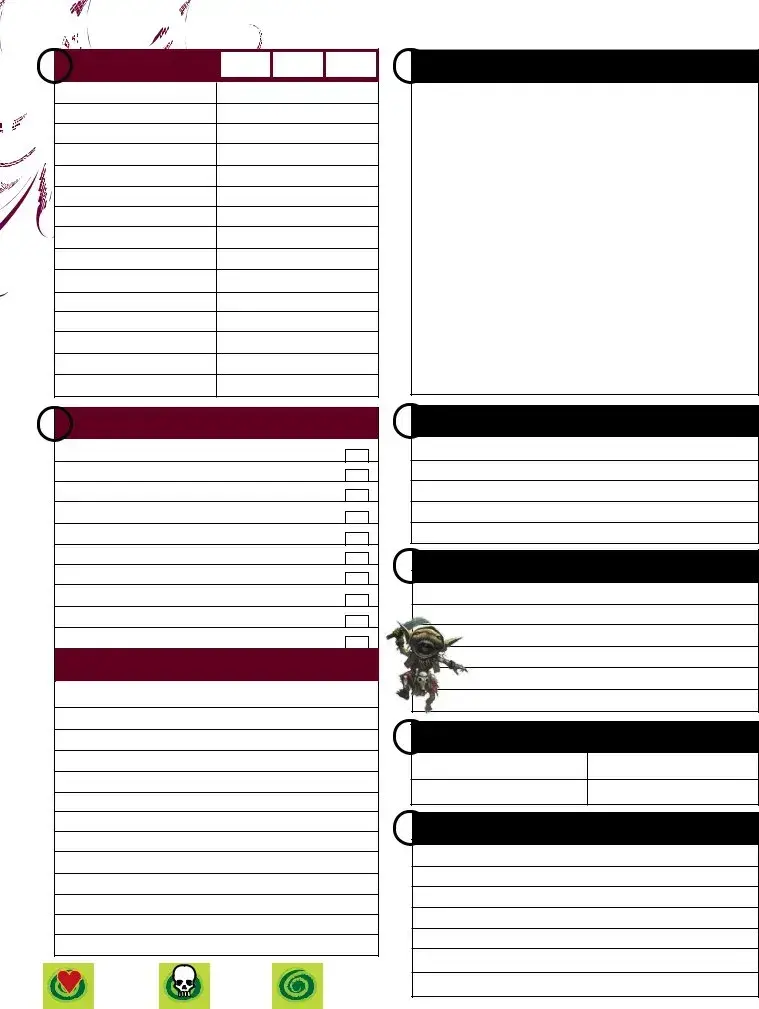What is a Pathfinder Character Sheet?
A Pathfinder Character Sheet is a form used by players of the Pathfinder role-playing game to organize information about their character. This sheet includes sections for a character's abilities, skills, weapons, armor, spells, and other important details that help players keep track of their character’s progress during the game.
How do I fill out the ability scores on the sheet?
The ability scores represent a character's core attributes, such as Strength, Dexterity, and Constitution. To fill these out, players typically roll dice or use point-buy systems to determine values. Each score is then recorded on the sheet. Following this, the corresponding ability modifiers are calculated and noted. These modifiers affect gameplay, including combat and skill checks.
What are skills and how do they work on the Character Sheet?
Skills are specific abilities that allow characters to perform tasks, such as climbing or persuading others. Each skill on the Character Sheet has a space for ranks, allowing players to track their proficiency. The total skill modifier is calculated by combining the ranks in a skill, the relevant ability modifier, and any additional bonuses. Keeping track of skill totals is crucial as they influence actions performed during gameplay.
What are class features, and why are they important?
Class features represent the unique abilities and perks that characters gain from their chosen class. Each class provides different features at various levels, and these are documented on the Character Sheet. Knowing a character’s class features is vital, as they can significantly impact play style and strategy during the game.
How is combat handled using the Character Sheet?
Combat details are recorded in several sections of the Character Sheet. Players will note their attack bonuses for both melee and ranged attacks, as well as damage numbers. Initiative rolls are also important and calculated using relevant modifiers. This information assists players in determining their effectiveness in combat situations directly during play sessions.
What is the purpose of tracking spells, and how do I use the spell section?
The spell section of the Character Sheet is meant for spellcasters to keep track of the spells they can cast. Players write down their prepared spells, spell levels, and spell DCs (difficulty classes). Understanding this section is crucial for spell management and strategy in encounters where magic plays a role.
Where should I record my character’s history and notable achievements?
The character history section allows players to document their character's background, story, and notable achievements, such as monsters slain or significant damage dealt. This not only enriches role-playing but also helps players remember key moments in their character’s journey throughout the game.
Can I modify the Character Sheet for my own needs?
While the Character Sheet is designed for specific details necessary for gameplay, players are generally encouraged to personalize their sheets as needed. It’s common to add notes or adapt certain sections to better fit individual play styles. Just ensure that the essential information remains clear and accessible to facilitate gameplay.



 Sheet
Sheet





 ON Sheet
ON Sheet
 =
=
 +
+
 =
=
 +
+
 =
=
 +
+
 =
=
 +
+
 =
=
 +
+
 =
=
 +
+
 =
=
 +
+
 =
=
 +
+
 =
=
 +
+
 =
=
 +
+
 =
=
 +
+
 =
=
 +
+
 =
=
 +
+
 =
=
 +
+
 =
=
 +
+
 =
=
 +
+
 =
=
 +
+
 =
=
 +
+
 =
=











 equIpmeNt
equIpmeNt